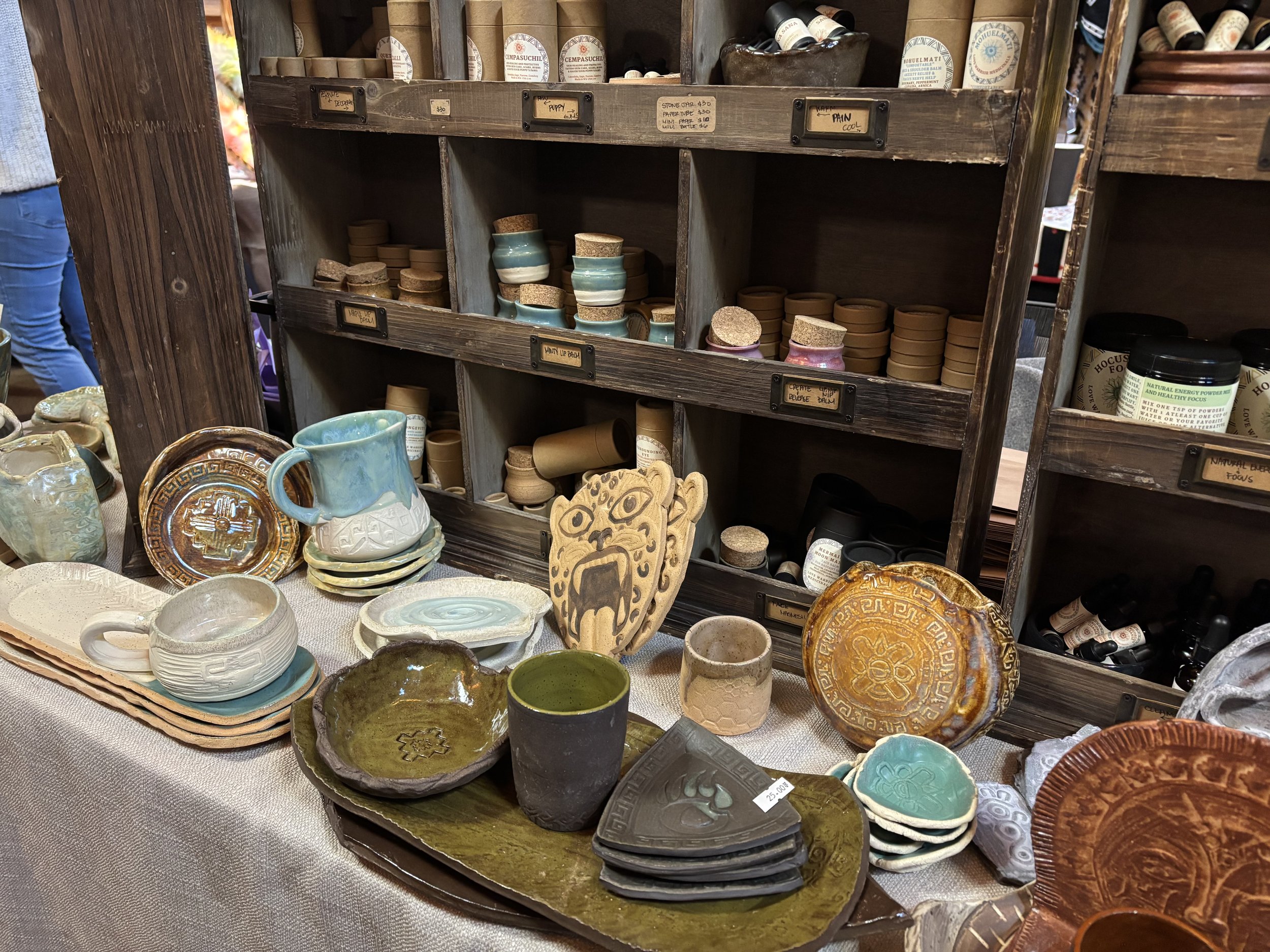Each vendor, when not set to their art, took turns telling my partner and me about their craft. One vendor pointed out their earrings made with fox fur, another told us about their scented lip balms and medicinal oils, and another told us where they sourced the wood for their pyrography (wood burning).
One of my favorite memories from the evening came from the Tribal kitchen, where cooks could be seen handmaking fry bread and other tasty treats. Fry bread is a traditional food, made by many Indigenous peoples across North America. It is made using only a few ingredients and tends to soak up the flavors of whatever you put on it. Historically, Indigenous folks created fry bread after the US government displaced them from their lands, as it was a simple recipe they could make using government rations.
For some, fry bread has become a symbol of survival, as well as a traditional part of a Native meal. My partner and I split one of these warm, fresh breads while sitting outside amongst the trees and other patrons, arguing over whether to spread strawberry or blackberry jam over it (we each ended up trying bites with both and sometimes a mix). The fry bread was delicious; golden brown on the outside and fluffy in the middle—a perfect treat for a break between visiting booths. There were also options for those who prefer their fry bread savory instead of sweet.


